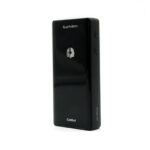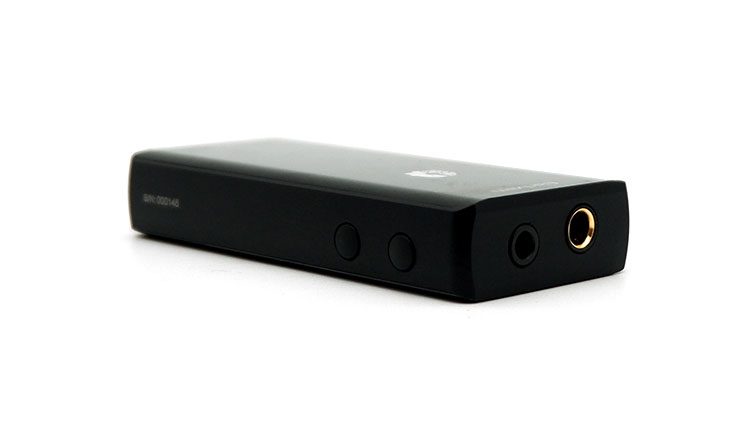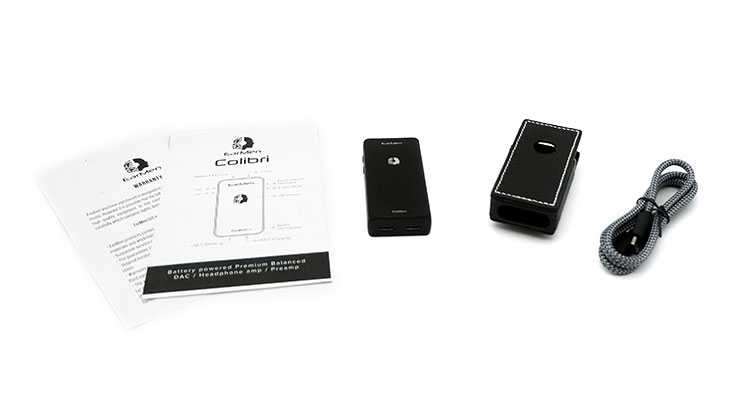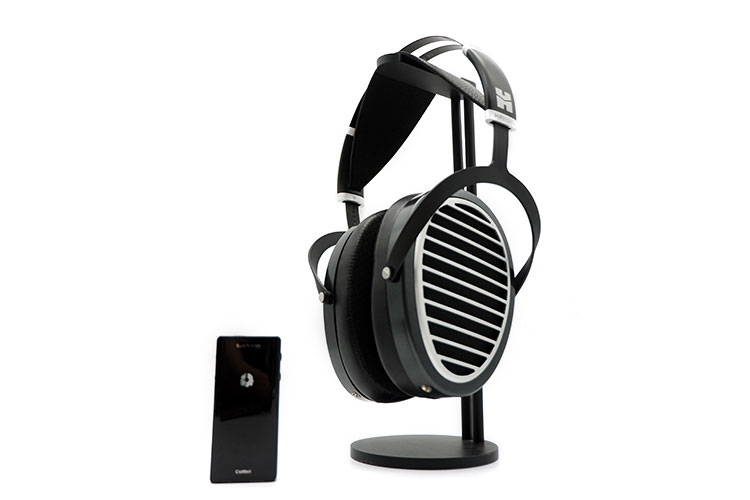This is a review of the Earmen Colibri, which is a high-end battery-powered dongle featuring an ES9281PRO DAC and up to 516mW of output power. It is priced at $333.
Disclaimer: This was sent to us as a sample for our honest opinion. Headfonics is an independent website with no affiliate links or services. We thank EarMen for this opportunity.
To learn more EarMen products previously covered on Headfonics you can click here.
Note, this article follows our latest scoring guidelines which you can read up on here.
Auris Audio is a company that manufactures tube headphones and stereo amplifiers that are positioned on the higher end of the market. However, their subsidiary, Earmen, is a company that aims to create more cost-effective solutions for a wider audience.
Earmen as a company is fairly new, but they have already produced some DACs that have become favorites here in the office such as the Earmen Sparrow which is a portable dongle DAC, and the Tradutto which is a mini desktop DAC.
This time, Earmen decided to release something in between, which is a transportable battery-powered DAC/Amp called the Colibri.
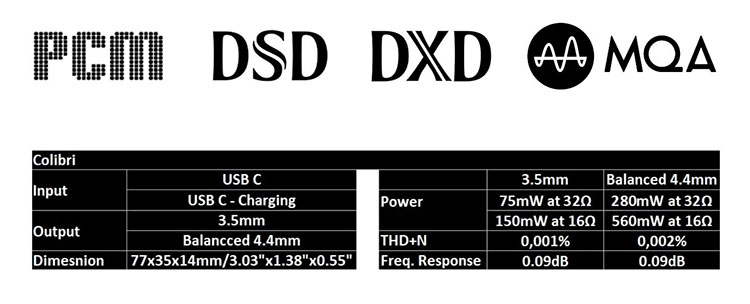
Tech Highlights
With the Colibri, Earmen decided to use an ES9281PRO chip from ESS, which is part of their USB Codec range of products, which integrates an ESS DAC and a headphone amplifier in a single chip.
This chip allows the Colibri to decode up to 32BIT/384kHz PCM streams, DSD128, and MQA as a full renderer which does the full MQA unfold on the DAC itself.
One of the most interesting features of the Colibri is that it is equipped with a battery. Having an internal battery means that the Colibri won’t drain the battery of the device that it’s connected to.
Another big advantage of having an internal battery on the Colibri is that it ensures that all internal circuitry will be provided with clean power regardless of what device it’s connected to upstream.
Design
Having an internal battery necessitates a larger chassis for the Colibri, so it’s much larger than most dongles and even larger than flash drives. So having the Colibri hanging out of your phone would typically cause strain to the interconnect cables. That could mean stacking it with rubber bands with your phone would be more practical.
The majority of the device is made with high gloss plastic, where the Earmen logo in front of the device glows in different colors to show the connection status and sample rate being decoded. The bottom of the device on the other hand indicates the battery/charging status.
There are 2 buttons on each side of the Colibri, and the buttons are used to change the volume, turn on/off the device, and activate the bass boost.
At the bottom there are 2 USB C ports, one for charging and one for data, then on top are the headphone outputs. The back panel on the Colibri is one of the most important parts though since labels for each port and button are there.
I/O
Being a simpler DAC/Amp, the Colibri is designed to only have USB inputs, but they are divided into a charging port, and a data port so it’s typically important to keep the device charged before starting to use it.
As for the outputs, the Colibri is equipped with both a 3.5mm single-ended output and a 4.4mm pentaconn output.
Controls
Controls on the Colibri are straightforward thanks to the labels on the back of the device, with the buttons on the left for volume controls. The button on the upper right is used to switch on/off the device, then finally, the button on the lower right is used to toggle bass boost control.
Front and center on the device is the Earmen logo, and it’s used to indicate the status of the device. White means connected, green means it’s decoding PCM/DSD/DXD, then magenta if it’s decoding MQA streams then finally red if it’s disconnected.
The bottom of the device on the other hand indicates battery life, where 1 blink indicates <25%, 2 blinks for 25-50%, 3 blinks for 50-75%, then 4 blinks for 75-100%.
Packaging & Accessories
The packaging on the Colibri is made with an outer sleeve that has a picture of the Colibri DAC, and then some information about the DAC itself. Then, there’s a thick box that protects the rest of the contents.
Inside the box, there is a foam insert that houses the Colibri DAC, but there is some space beside it to house the accessories.
Aside from the DAC itself, the package also comes with a faux leather carrying case with a belt clip. You also get a USB-C to USB-C cable that can be used to connect the Colibri to either a charger, a phone, or a computer.
Sound Impressions
Most sound impressions are made with the bass boost using the 4.4mm balanced output.
Summary
When I’m looking for a versatile DAC, I typically look for a balanced tonal presentation so that it could easily compliment the character of the downstream IEM/headphone. The Colibri masterfully takes this challenge on by having a generally even-handed tonal balance, while maintaining an engaging presentation.
While the technical abilities of the Colibri allow it to have an accurate presentation, it doesn’t shove it down your throat, staying clearly away from being gratingly analytical.
Timbre
With the bass boost turned off, the Colibri has a very neutral tonal balance that tends to make for a less engaging listen for my tastes. Turning the bass boost on adds a splash of bass energy that gets my foot tapping a bit more with faster and busier tracks.
Regardless of whether the bass boost is on or off, the bass that is produced by the Colibri is linear down to the sub-bass. And while there is a difference in quantity, the control over the bass region remains the same which allows bass notes to have a physicality without bleeding into other frequencies.
Although there isn’t much in the way of injected vocal euphony, the Colibri doesn’t get in the way of presenting the power and the air that’s already in the vocal track. This allows the vocal quality and power of vocalists to be accurately presented.
Midrange instruments on the other hand tend to have a brighter tilt, but each note that comes from pianos is backed up with thickness and physicality, making them sound natural with a hint of sweetness. Similarly, each strum of the guitar sounds full-bodied, while having a crisp and sweet edginess in each note.
The treble presentation on the Colibri can allow cymbal hits to have an edginess and splash with a lot of PRaT, which makes them sound very natural and engaging. However, the treble on the Colibri does tend to be on the thinner side, making wind instruments such as saxophones sound a bit thinner while seemingly occupying less space than expected.
Staging & Dynamics
I wouldn’t take it against the Colibri that it doesn’t artificially introduce a wider soundstage, since keeping the natural width and depth of the soundstage allows it to present a more natural imaging presentation. This means the Colibri can create a natural and accurate center image that is typically situated right in front of me.
One of the technical strengths of the Colibri is its ability to accurately place the images within the soundstage while allowing each image to be properly delineated from each other. However, the images that are formed tend to be smaller than I expect them to be since they tend to be so detailed and compact.
Single-Ended Performance
The performance of the single-ended and balanced output on the Colibri is pretty close, but there is some difference between the 2 ports when I listen intently to the same IEMs. With the single-ended port, there is a slight loss in width and image delineation. Also, there is a slight loss of control over the bass while having the same level of bass between the 2 ports.
Synergy
Power
Through the single-ended output, the Colibri is rated for 75mW into 32Ω, which isn’t anything to write home about. However, this should be sufficient to power most IEMs. And true enough, it can power IEMs such as the BGVP DM8 and the Mangird MT4.
Using the balanced output, the Colibri is rated for almost four times the power of its single-ended output at 280mW into 32Ω.
Although this is a significant leap in terms of power ratings through the single-ended output, I would suggest that only sensitive headphones should be used with it, as it easily runs out of gas once I connect it to an even easier-to-drive planar headphone like the Hifiman Ananda.
Powering high impedance full-sized headphones like the Sennheiser HD600 brings the Colibri to its limits. With the HD600 plugged in, I needed to crank up the volume to 95% to reach my normal listening levels. Fortunately, I didn’t experience any sluggishness or clipping despite having the Colibri set so high up its volume range.
Pairings
With the more honest nature of the Colibri, the pairing with the MT4 resulted in a drier presentation which gives the vocals a drier quality while treble notes tend harshness. This tuning, however, allows the MT4 to create a strikingly accurate imaging presentation.
Switching over to the BGVP DM8, the more resolution and the timing of the Colibri allow the DM8 to create a detailed and controlled presentation while having a touch of euphony that gives vocalists some vibrance. All this while retaining technical accuracy making it easy to pick out details in the track and casting an accurate imaging presentation.
Moving over to full-sized headphones, I ran the Sennheiser HD600 on the Colibri. While this pairing created an overall enjoyable experience, the HD600 tends to sound less detailed allowing the infamous Sennheiser veil to come to the fore.
Imaging precision and spacing are maintained throughout though, so it’s still a great experience, particularly for a portable solution with the HD600.
Click on page 2 below for select comparisons





